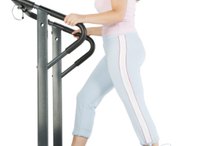What does fact checked mean?
At Healthfully, we strive to deliver objective content that is accurate and up-to-date. Our team periodically reviews articles in order to ensure content quality. The sources cited below consist of evidence from peer-reviewed journals, prominent medical organizations, academic associations, and government data.
- American Council on Exercise: Strength Training 101
- American Council on Exercise: Calorie Burners: Activities That Turn Up The Heat
- American College of Sports Medicine: Information on Selecting and Effectively Using Free Weights
- American College of Sports Medicine: Information on Selecting and Effectively Using Free Weights
The information contained on this site is for informational purposes only, and should not be used as a substitute for the advice of a professional health care provider. Please check with the appropriate physician regarding health questions and concerns. Although we strive to deliver accurate and up-to-date information, no guarantee to that effect is made.
How To Lose Weight with Dumbbells
When you design your exercise program for weight loss, you may find yourself focused on cardiovascular workouts such as walking, cycling and swimming. You need these types of exercises to burn calories and contribute to your weight loss, but do not overlook the power of the dumbbell. Adding dumbbell exercises to your weekly routine burns calories during and after the workout 2. The increase in muscle tissue from the dumbbell workout increases your metabolism so you burn a higher number of calories, even when you are at rest. The more calories you burn, the more weight you lose.
Select dumbbell exercises for your major muscle groups. Use a dumbbell amount that is challenging on your final two repetitions of each set.
When to Expect Weight Loss Results From Rebounding
Learn More
Include exercises for your shoulders, chest, back and arms. For example, perform shoulder presses, bench presses, back rows, arm curls and arm extensions.
Strengthen your lower-body with exercises such as squats, lunges, deadlifts and calf raises, all while holding a dumbbell in each hand.
The Calories Burned During Firm Workouts
Learn More
Complete core-strengthening exercises including sit-ups, side bends, wood chops, and side-planks holding onto the dumbbell.
Perform eight to 12 repetitions of each exercise for each major muscle group. Complete one to three sets of each. Aim to train with the dumbbells for 30 minutes to burn approximately 228 calories if you weigh 140 pounds or 261 calories if you weigh 160 pounds.
Complete your dumbbell workouts two or three days a week to burn calories and increase your metabolism -- this, along with a healthy diet, will lead to your weight loss goals. Allow two days of rest in between training days for complete muscle recovery.
Tips
Change up your dumbbell exercises every three to six weeks to keep your muscles stimulated and responding.
Warnings
Check with your doctor before you begin a weight-lifting program and to select a healthy body weight for you.
Related Articles
References
- American Council on Exercise: Strength Training 101
- American Council on Exercise: Calorie Burners: Activities That Turn Up The Heat
- Effective Strength Training: Analysis and Technique for Upper-body, Lower... Douglas Brooks
- American College of Sports Medicine: Information on Selecting and Effectively Using Free Weights
- Fisher JP, Steele J, Gentil P, Giessing J, Westcott WL. A minimal dose approach to resistance training for the older adult; the prophylactic for aging. Exp Gerontol. 2017;99:80-86. doi:10.1016/j.exger.2017.09.012
- American College of Sports Medicine position stand. Progression models in resistance training for healthy adults. Med Sci Sports Exerc. 2009;41(3):687-708. doi:10.1249/MSS.0b013e3181915670
- O'Keefe JH, O'Keefe EL, Lavie CJ. The Goldilocks zone for exercise: Not too little, not too much. Mo Med. 2018;115(2):98-105.
Tips
- Change up your dumbbell exercises every three to six weeks to keep your muscles stimulated and responding.
Warnings
- Check with your doctor before you begin a weight-lifting program and to select a healthy body weight for you.
Writer Bio
A mother of two and passionate fitness presenter, Lisa M. Wolfe had her first fitness article published in 2001. She is the author of six fitness books and holds an Associate of Arts in exercise science from Oakland Community College. When not writing, Wolfe is hula-hooping, kayaking, walking or cycling.









